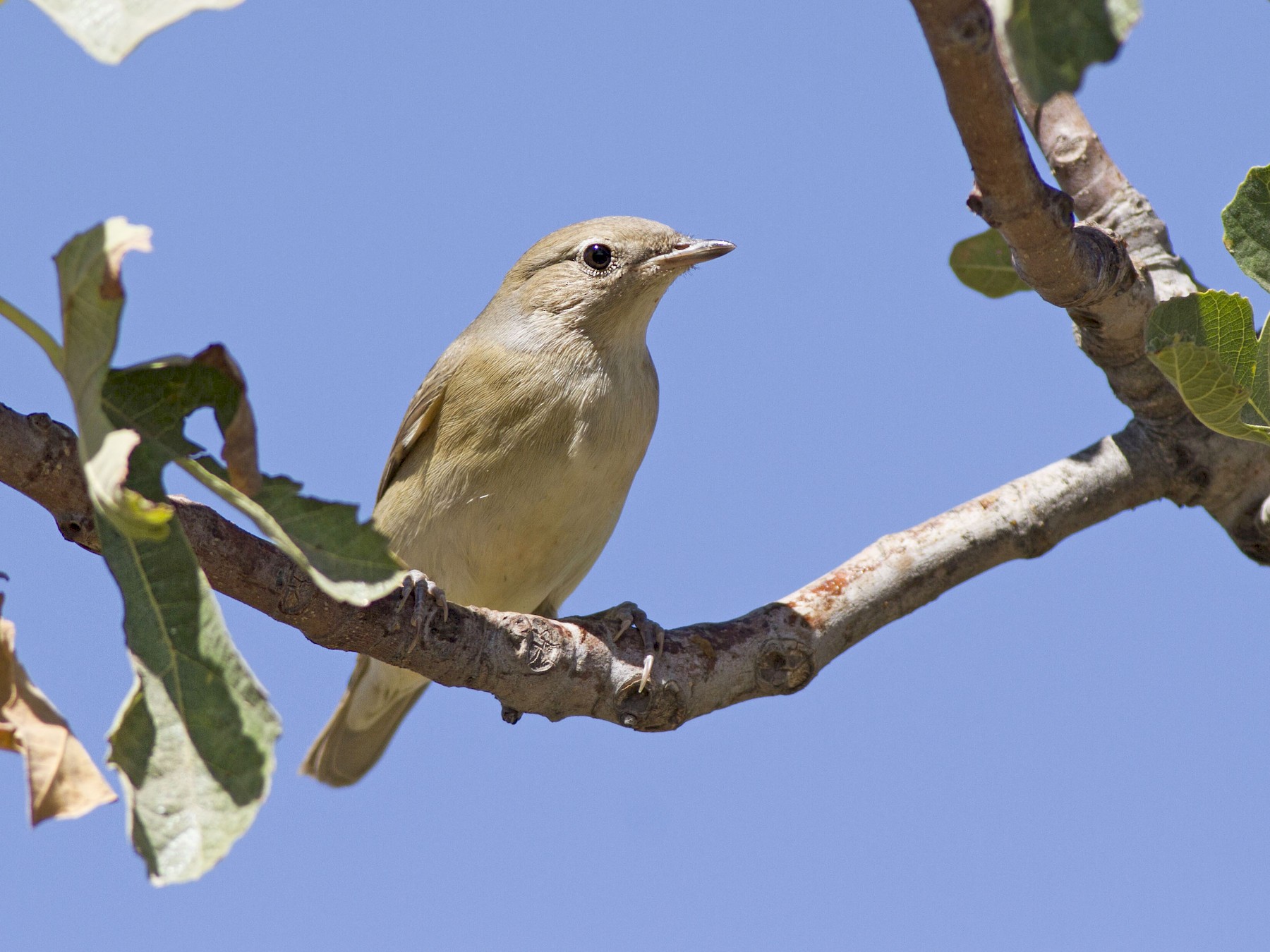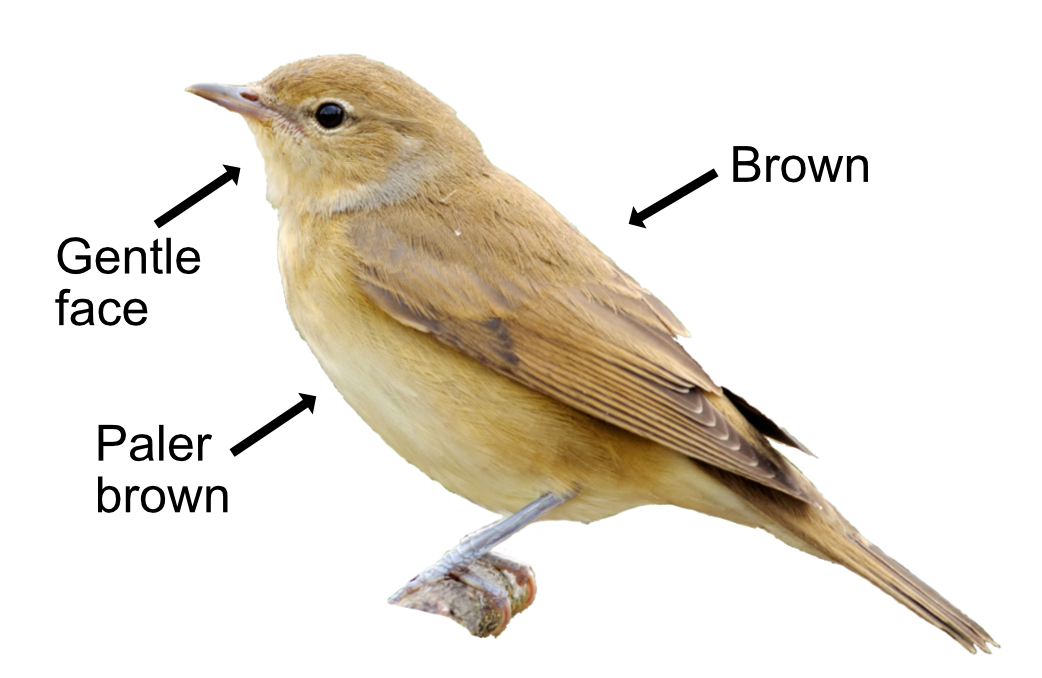
The Garden Warbler is remarkable by being unremarkable. It does not have a single marking that makes it distinct. A genuine 'little brown job'. Despite its name, it does not like gardens, preferring to hide in woodland edges where the undergrowth is thickest. He makes up for his bland looks by singing the most beautiful song.
The Garden Warbler is the size of a Great Tit with plain brown upperparts, a gentle face with no obvious markings, and paler brown underparts. Their song is very similar to a Blackcap's. An energetic 3-8 second steady stream of melodic phrases made up of mellow sounds mixed with a few scratchy notes. The contact call is a sharp "check!"
They eat insects in summer, especially juicy caterpillars, and fuel-up on berries and fruit when getting ready to migrate. They are particularly partial to figs, which they eat as they pass through the Mediterranean, in their cool shades, on the way back to Africa in August.

Garden warblers first breed when they are one year old, and are mainly monogamous, staying with the love of their life. Once they arrive in April or May, the male will build a number of simple nests (cock's nests) to show off to his potential mate, whom he attracts to his territory by singing. His nests are fairly rubbish and only rarely will the female complete the structure. More usually she will build a new one. She builds the cup-shaped nest in a low bush and lays 4-5 eggs. These hatch after 11 days. The youngsters hatch naked, with no feathers, and with their eyes closed. Mum and dad feed them until, fully feathered, they are ready to leave the nest 10 days later. The youngsters stay with mum and dad for 2 weeks. Sadly, only about a quarter of young birds survive their first year, many becoming victims of Sparrowhawks. The nests are also favoured targets for Cuckoos. Its tough being a young Garden Warbler.
There are 170,000 Garden Warbler pairs found widespread throughout Britain, though rarer in Scotland and urban areas. Their population fluctuates a lot, but with no obvious up or down trend. The main threat to Garden Warblers is changes in the habitat on their migration route to Southern and Central Africa caused by global warming. Unlike many birds, The Garden Warbler moults mainly when in Africa to be spic and span when they return in spring.
Their Latin name is 'sylvia borin' which sounds like 'boring Silvia' for being so bland. It is derived from the Latin 'silvia' for a woodland nymph and 'borin' a local name for the bird in the Genoa area of Italy that comes from the Latin 'bos' for 'ox' as the warbler was believed to accompany oxen. Cow fairy is almost as bad as boring Silvia.